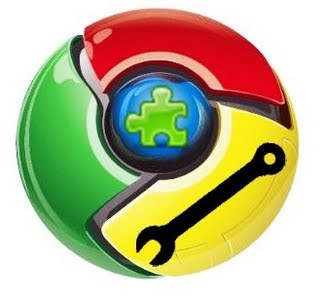Richard Darell: So, I invited my friend and colleague Fernando Fonseca (@fjfonseca) to try a new approach when writing articles for Bit Rebels. So far I have always written my articles by myself, but I haven’t given topics and suggestions to other writers at Bit Rebels when time just haven’t been there for me. In an attempt to create a sense of a more lively climate at Bit Rebels I thought this could be a way to connect with some of the writers and get a feel we almost were in an office together.
As all of our writers are scattered around the world, this could surely be the solution we have been waiting for. Remember my article not so long ago “How Google is failing the launch of Google Wave” where I had almost counted out this potentially epic online tool for its lack of updates and fixes. After a somewhat lively discussion outside the Bit Rebels forum, I somewhat re-angled myself towards it. Not entirely, though. I still think Google is doing it wrong by launching something that doesn’t properly work when it comes to server load. That’s my only concern right now, and it sticks like a thorn in my side that they don’t do anything about the lag that usually happens when you have been talking, working, waving or whatever term you want to use for your collaboration with others.
Fernando Fonseca: Quite interesting Richard :-) I think that the real problem with Google is that is not communicating properly what is going on. This issue has been discussed with Google Wave’s team members that are participating in public waves and they agree: They have to communicate better regarding what is happening in the background when waves start to lag, get unsynced, can’t playback properly, etc.
Regular users see it as ironic that there is no Official Public Wave to keep wave’s users up to speed with what is happening at any given moment.
Having said that, this is a preview and what there is a problem with it: a huge problem. Remember when everyone was after invitations? Those times are gone. Early adopters are here, but the third generation that got invited doesn’t understand Wave and don’t have the mind frame to be using a service that doesn’t work. So to test server side issues Google Wave had to send more invites to see if they can have the number of active users they need to test the service. It’s quite ironic actually, don’t you think?
Richard Darell: All very important points and I agree to some extent. However, when sending out the third batch of invites one could at least understand that there were people coming in to use the preview service that had no way of actually utilizing it in their work (which was somewhat what the service was for in the beginning. At least that’s what they said during their demoing). So, knowing that new users were coming in to try out the service wouldn’t they at least have created some how, why and where kind of tutorial for these new souls?
This would potentially have spawned a lot more interest, and more people would still want those invites and Google could have tried out their service with as many people as they had intended to with all the invites they sent out. Now there’s a lot of invites just laying around cause no one wants to try it out because of that one fact. They don’t understand why they would ever need a service like this.

Fernando Fonseca: I love lists you know Richard? ;-)
- Google Wave should communicate better: this is for me the major issue. Users need to know what is going on so that they can feel they are part of the development of all this and thus also build a strong community that is eager to help others.
- They have to jump start what is being called “permission levels”: Some control that allows any person that creates a Wave to be able to control what other users can and can’t do inside of a Wave. This is a major issue in public waves.
- Also important, privacy: at this moment Google Wave contacts are connected to Gmail contacts: this means that someone just can go to any public wave, add all users to their contacts and they will be on his/hers Gmail contacts. See that “Requests” option on the Navigation tab: that should already be working.
In what comes to the specific use, we could give to Wave on Bit Rebels; I can think of many ways:
- Writers could insert on a Wave ideas for posts so that everyone on the team can know what the others are working on to avoid duplication.
- Wave can be used to discuss topics of interest and editorial guidelines in a way that everyone is up to speed (by using the playback function)
- Wave can also be used to share resources, tips, URLs, videos, etc. A creative pool of content… like the sound of it ;-)
Richard Darell: Yeah, for us it’s potentially a great tool. However, I am wondering if it is the email killer as most people call it. With the lag that Google Wave have right now, I can’t even see it working as your everyday email inbox and conversation tool. I tried open a Wave that you and I had going on while talking about all things Bit Rebels not long ago and it crashed my FireFox over and over again before I could even check it. I can’t see this being a vital tool in my day to day work schedule. As FireFox IS the most used browser today, I can’t imagine why they haven’t been on it like bees on honey already.
Fernando Fonseca: AH!!! Firefox is a pain for Google Wave. This is a fact, and you are right: Google should take care of it. That is because of Google Chrome.
I just came up with an example:
Imagine that we want to write a post about what 2009 was for Bit Rebels.
You open a Wave and give the pitch. All writers are invited to the wave, and they all start writing about it from their perspective.
Richard Darell: A very interesting thought indeed. Yeah, the collaborative aspect of it is huge, no doubt about it. And another fact I want to point out is the heavy impact it will have on spelling and phrasing as everyone can go into each others “blocks” and make sure it’s said right. For us, it’s a great deal of help as we write our articles quick and amusing as Bit Rebels is all about fun and facts.
Fernando Fonseca: I can only imagine all of us writing a team post about Twitter and Susan (@buzzedition) coming to the Wave on a later stage and kicking our collective A$$… because she is soo good at it (Twitter I mean).
Richard Darell: True. So where do you think will happen next with Google Wave? What do you think they will address first and do you think they will change their strategy now when they know the community doesn’t really “feel” the use of Google Wave yet. Some may, just like us to some extent, but where and how do you think will apply changes and modifications to change this?
Fernando Fonseca: I think that we will see, on the short run, significant changes on Google Wave. The acquisition of Etherpad is a huge step to bring a very mature technology into Wave and a step into the right direction in what comes to stability. This is huge. Also, I would expect that permissions are going to be rolled out, and more stability to the overall Wave experience are going to be implemented. As soon as this happens, I think that those abandoned accounts and all the Invitation Waves that are still to be put to some use will start to be of use. I’m very optimistic even if I understand the obstacles that are ahead.
Richard Darell: That’s great! I hope Google Wave will find it’s way back into the spotlight again. Which brings me to the much interesting fact that we are writing this post in Google Wave collaboratively right now, and it’s working just splendid, so far. However, with so much potential it’s hard to estimate the time people and other developers spend to add plugins for Google Wave and what could potentially make it much simpler to use. For example, is there a plugin that enables you just to shoot a wave directly into WordPress edit mode where you can add and remove further in your article? If not, someone should hurry up and create such a vital part because I believe them implementations of Google Wave could potentially be huge when it comes to collaboratively write articles together. What’s your thoughts on this?
Fernando Fonseca: What I really would like to see was for Wave to be open so that what is happening right now could be seen by the whole world on a post at Bit Rebels in real time!! And where everyone, independently if they have a Wave account or not would be able to participate in this process with their thoughts and ideas. There are lots of plugins being developed at the sandbox that will allow for an extended implementation of Wave with the outside world.

Fernando Fonseca: The most reliable is called embeddy (embeddy@appspot.com) that generates a code that anyone can insert right before the <body> tag of every post and enable to insert a wave in it. The trouble is … not everyone knows HTML to the extent of using it. So that anyone is “anyone that has some HTML knowledge and is not afraid to mess with the HTML code of a page”.
As we have tried the WordPress specific plugin “Wavr” is not working properly, and it is frustrating because one doesn’t know if it doesn’t work because of the plugin or because the API services of Wave are under some upgrade/fix/maintenance period.
Richard Darell: Yeah, an upgrade of that is totally one of the most important issues Google Wave have to look at right now.
So, how do you find the experience of writing a post/article in Google Wave and what could we do to further speed up the process and also make it more connected? Do you see a WordPress/Wave plugin coming that will enable you to click easily a button and the Wave article you just wrote with three other people will pop into the editor of your blog for last minute changes before being published?
Fernando Fonseca: I sure hope so, and this is something that I will forward to some devs so they can think about it. I think that our role is also to demonstrate, in a balanced manner, that there are shortcomings to Google Wave but that there are also great things about it, and this post is one of the examples. To write this by e-mail would take ages.. to say the least ;-)
Richard Darell: So true! To end up this collaborative article what do you think we should say to people that want to start writing collaboratively on their blog or magazine? Are there any suggestions and guidelines we could give them for the transcript to be easily read back and also easily manageable?
Fernando Fonseca: Let it flow would be my first advice, pick a topic and let all ideas flow. Then be aware of the structure that at this moment a Wave has: The smart thing to do is to write everything on a single Wavelet, so that is easier to export… exactly what we didn’t do Richard. LOL
Richard Darell: I point my finger at you on that one Fernando. LOL :)
Fernando Fonseca: Mea Culpa Mea Culpa #hangsheadinshame
COMMENTS